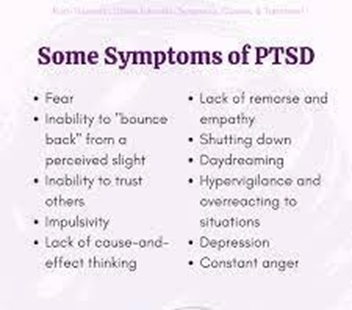Which experiences are most likely to precipitate posttraumatic stress disorder (PTSD)? (Select all that apply.)
An adult is trapped for 3 hours at an angle in an elevator after a portion of the supporting cable breaks.
An 8-year-old child watches an R-rated movie with both parents.
An adolescent is kidnapped and held for 2 years in the home of a sexual predator.
A young adult jumps from a bridge with a bungee cord with a best friend.
Correct Answer : A,C
A. Experiencing a life-threatening event such as being trapped can precipitate PTSD.
B. Exposure to an R-rated movie, while potentially distressing, is not typically considered a traumatic event that leads to PTSD.
C. Prolonged exposure to traumatic events like abduction and captivity often leads to PTSD due to the severe and chronic trauma experienced.
D. This is not typically considered a traumatic event leading to PTSD as it's a voluntary, recreational activity that involves perceived safety measures.
Nursing Test Bank
Naxlex Comprehensive Predictor Exams
Related Questions
Correct Answer is A
Explanation
A. For a client with severe depression, a calm and direct approach is beneficial. Sitting with the client and offering simple, clear information can help establish trust and rapport.
B. Attending group therapy immediately might overwhelm the client, especially if they are newly admitted and experiencing severe depression.
C. Taking the client on a tour and introducing all staff members might be overwhelming or excessive for someone with severe depression.
D. While explaining unit policies is important, a direct informational approach might be more effective initially given the severity of the client's condition.
Correct Answer is C
Explanation
A. Sleep disturbances are common in PTSD, but they might not address the current acute symptoms the client is experiencing.
B. This question explores the immediate trigger for an outburst but might not directly address the PTSD symptoms related to the sexual assault.
C. Inquiring about flashbacks directly relates to one of the hallmark symptoms of PTSD, especially given the recent severe anxiety related to the assault.
D. Avoidance behavior is a symptom of PTSD, but the question about experiencing a flashback addresses more immediate distress.

Whether you are a student looking to ace your exams or a practicing nurse seeking to enhance your expertise , our nursing education contents will empower you with the confidence and competence to make a difference in the lives of patients and become a respected leader in the healthcare field.
Visit Naxlex, invest in your future and unlock endless possibilities with our unparalleled nursing education contents today
Report Wrong Answer on the Current Question
Do you disagree with the answer? If yes, what is your expected answer? Explain.
Kindly be descriptive with the issue you are facing.
